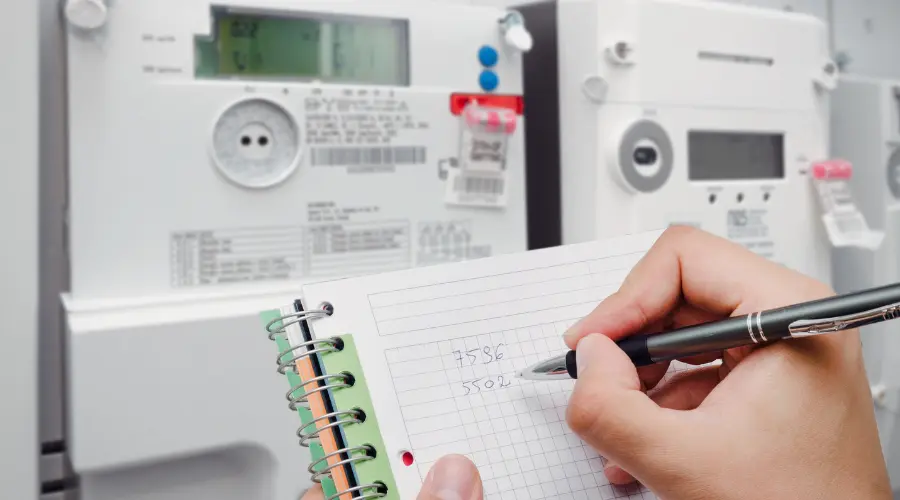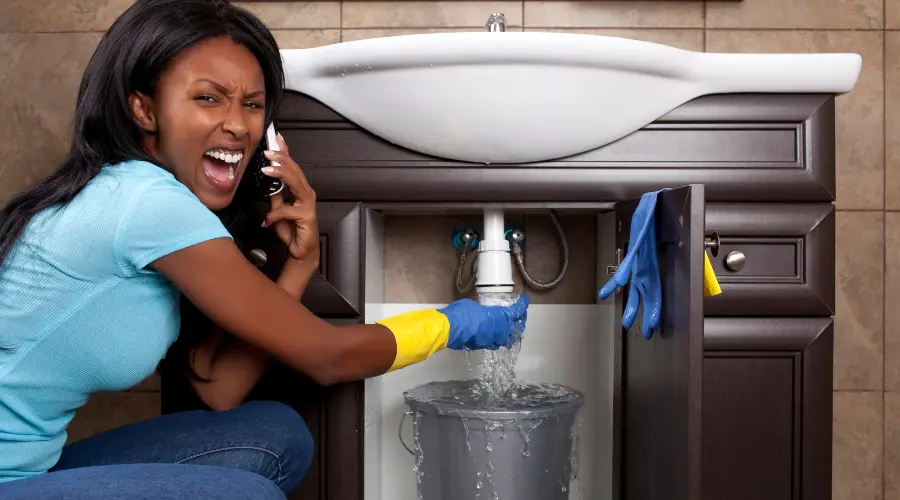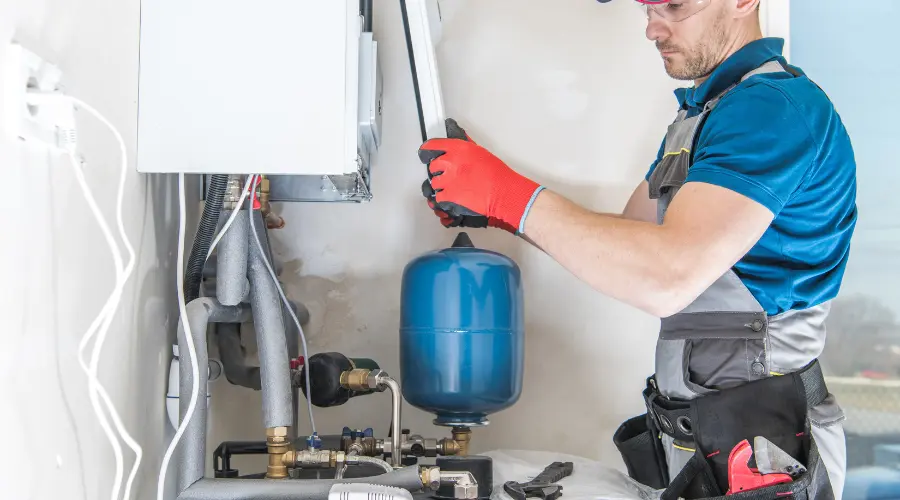When the first signs of winter start to appear, it is imperative that you check the status of your heating system. This is true regardless of where you reside.
Furnaces continue to be the principal method of heating homes in the vast majority of regions across Canada and in a sizeable chunk of the United States.
The majority of us don’t switch on our furnaces until at least October, which means that they’ve been turned off for nearly half a year (assuming you’re fortunate enough to live in a place where the weather is mild).
It is crucial to perform routine maintenance on the furnace before the chilly air hits. Here are some helpful hints.
The completion of these activities will guarantee that your heating system is not only operating at its optimum level but is also operational.
The following is a list of the top nine most important regular furnace maintenance operations that everyone should conduct at least once every year, preferably before the beginning of the heating season.
1. Ensure that your Air Ducts, Vents, and Filters Are Clean
It is absolutely essential to have adequate ventilation when it comes to the transfer of heat.
You should clean your vents and replace your air filter at least twice a year, but during the winter, when you use your HVAC system more frequently, it is even more important that you do so.
Now, if you’re seeking pristine air, you have a huge selection of air filters and air cleaning systems from which to choose.
But that’s a topic for a completely different piece, and if you’re interested in learning more about how your air filter affects the quality of the air inside your home, you can find that article right here.
The process of cleaning the ducts and vents in your home is a complex one.
In order to remove the vents, you will require your vacuum cleaner and its hose (preferably, a shop vac), in addition to a brush, some microfiber cloths, and a screwdriver.
To get started, you’ll want to cover your registers with paper towels or cleaning cloths. This will protect them from dust and debris.
If your registers aren’t clean, the dust will fly out of them and find its way into your house.
After that, turn off the heat supply but leave the power on since you will be using the fan to blow dust out of the vents and furnace and into the supply registers.
After turning off the fan, clear the supply registers of any debris using your vacuum cleaner or a brush, then turn the fan back on.
Get a long broom to reach inside the piping system if you do not have a long hose attachment.
After that, you may take out the air vents and clean the dust that has accumulated in those as well.
From this point, you can make your way into the main ducts of your system.
Turn off not only the fan but also the power supply to the entire system. To do this task, you will not be able to use your standard household vacuum cleaner since it is not powerful enough. Instead, you will need a heavy-duty vacuum cleaner, sometimes known as a shop vac.
Because this is likely the most difficult and messy phase of the process, you might find that getting assistance from a professional is advantageous. While you’re there, make sure to give the exhaust flue a once over as well.
After everything has been put away, you can switch out the dirty air filter for a clean one. You should also be ready to clean the other components of your heating system at this point.
2. Is it just me, or does this place have a bit of a chill to it?
Not all houses are made equal, and older ones in particular are prone to have a number of spots that are drafty. Look around your house for places where air can escape, and then do all you can to make those locations airtight…
If you give off even a small bit of heat, it’s the same as throwing money away. It’s possible that now is the best time to fix any broken windows or aging doors you have in your home.
3. Maintain a Clean Heat Exchanger
The heat exchanger in your furnace is an important component because it warms the air that is utilized in the process of producing heat for your home.
It is also necessary to clean it at least once a year in order to get rid of dust and debris and ensure that it performs correctly.
In order to clean your heat exchanger, you must first turn off your system and, if applicable, also be sure to cut off the gas.
The next step is to get a brush and clean the debris and grime off of the exchanger block.
If required, use a wet cloth to remove any hardened buildup that may have occurred. Finally, make use of a vacuum attachment that has a narrow opening in order to clear up each of the chambers in the block assembly.
If your system is more than a few years old, you may find that professional cleaning is beneficial. A specialist in heating, ventilation and air conditioning will have access to all of the necessary parts and will be able to inspect the heat exchanger for cracks.
Carbon monoxide leaks can be caused by damage to the heat exchanger in your furnace, which is a very dangerous situation.
4. Make Sure That Your Blower Motor and Fan Are in Working Order
Your blower motor is responsible for circulating the air into the vents, but dust might prevent it from working properly.
When you are cleaning the heat exchanger, you should also clean out your blower motor (while the system is completely off).
Take off the blower door so you may clean the blower.
Before attempting any kind of do-it-yourself maintenance on your furnace, be sure that it is turned off by cutting off the fuel supply and the electrical power that it receives. To turn off the supply of gas, turn off the main gas valve.
It’s possible that the blower switch needs to be removed as well. After that, remove the fan from the cabinet with the help of a screwdriver, but be careful not to damage the wiring or your fingers.
You don’t want to put the wiring along the cabinet edges at risk in any way.
To clean the cabinet, grab the vacuum hose, and then use a toothbrush or a paintbrush on the blower wheel and the motor.
After you have cleaned the blower motor, you may discover that it needs to be lubricated. Check the owner’s manual for your furnace to see if this step is required to be taken.
After that, you should clean the caps that are attached to the blower bearings before removing the bearings in order to lubricate them.
5. Give your thermostat a second look
Imagine you hired a heating contractor and paid them $150 just to change your thermostat to the heating setting…
Check your t-stat and make sure it’s set correctly; this occurs more frequently than you might expect.
Is there even a problem with your thermostat? Right now is the perfect time to find out.
Turn the heating system back on after you have cleaned it with a vacuum and replaced all of the components (and restore the gas if necessary). You should raise the temperature by going to the thermostat in your home.
In approximately a minute, once the thermostat kicks on, the heat will begin to circulate. It’s possible that the thermostat itself is broken if you can’t hear the furnace turning on and off.
You should begin by taking off the cover and examining the connections. The connections made by the wires ought to be complete.
If you don’t know how to do this, try out some tutorials on Google or YouTube. (If you do not feel comfortable doing this on your own, you may always hire a specialist or an electrician to assist you.)
If the cables appear to be in good shape, you should verify that you turned on the power source after cleaning it.
If it continues to be inoperable, you will need to contact an HVAC technician.
It’s possible that the problem is caused by one of several different components, such as your blower, heat pump, or furnace fan. A malfunctioning thermostat is another possibility.
A trained expert can test each component in order to identify the offending item.
6. Batteries!
In spite of the fact that carbon monoxide and smoke detectors can be very unpleasant with their nonstop beeping, they do so for a good reason: the batteries in the devices are running low, and they want you to replace them.
Therefore, you should put away your wallet and replace the batteries in order to keep yourself, your home, and your family safe.
7. What could be causing my furnace to smell?
There is a possibility that you will detect a faint odor of burning when you first start on your heating system…
If the scent continues, you should make sure to take the appropriate safety precautions; however, it is likely just the dust that is being burned off on your heat exchanger.
Paints and other chemicals should not be kept in the area that houses your furnace. The gases from them might damage the heat exchanger in your furnace, despite the fact that you might not be able to smell them.
This can result not just in costly repairs but also in toxicity from carbon monoxide. Keep your furnace room clean and free of debris at all times.
It’s possible that the smells coming from your furnace are the same as the smells that can come from your air conditioner.
Read this article to learn more about the most prevalent odors that can be produced by your heating, ventilation, and air conditioning systems.
That may provide you a clue as to what could be wrong, especially if it doesn’t smell quite right.
8. Pre-Season Checkups and Inspections
Even the most experienced do-it-yourselfers can benefit from an annual inspection and in-depth cleaning. Why?
Because virtually all manufacturers of HVAC systems include the requirement for one as a condition of their warranty.
If your furnace breaks down in the winter and you haven’t gotten its annual check-up, it might cost you a lot of money.
You should contact a local heating, ventilation, and air-conditioning (HVAC) service company to perform an inspection and maintenance check on your furnace before the start of the heating season if you want to be absolutely certain that it will function in a manner that is both safe and dependable throughout the entire winter.
Therefore, make sure you are prepared and schedule an inspection before the weather becomes too cold.
Hint: If you engage them under an annual furnace maintenance agreement, you’ll receive a better deal on the pre-season inspections. Additionally, most businesses offer premium service at a discounted fee in the event that there is an unscheduled failure.
Quick Tip: Make Sure Your HVAC Technician Is Up-to-Date
Be sure to make a record of any problems that you may experience with your air conditioner, heating system, or furnace.
Keep all of the receipts and invoices from past visits from an HVAC professional, and keep all of this paperwork in a safe place close to your furnace…
If you are able to help advise the current service technician about problems that have occurred in the past, it could save you hundreds of dollars on future repairs.
9. Do you think my Furnace is older than I am?
If your current heating system seems like it could earn a nice sum on Antique Roadshow, then it’s probably time to start shopping around for a new one.
You should make it a point to receive at least three quotations; although they will all be comparable, doing so will help you feel more confident that you are receiving a good bargain.
Final Furnace Maintenance Tips
Are you prepared for the next winter months? There are preparations that every homeowner ought to make before the first chilly spell begins.
At the very least, you ought to check your thermostat, turn the heating system on at least once, and change your filter before the new season begins. If your heating system won’t turn on, you could have more serious issues.
Having said that, these maintenance responsibilities are the very minimum.
When winter arrives for good, failing to do routine maintenance on your furnace, such as cleaning the blower, ducts, and burners can lead to catastrophic failures that endanger both your well-being and your financial stability.
In addition, if your HVAC system is still quite new, this maintains the validity of the guarantee.
Don’t put off putting these suggestions into action! When the weather starts to turn, all of the people who have been putting off calling the local HVAC service firm will suddenly make the decision to do so at the same time. This won’t be long now.
Are you ready to make your appointment for the winter furnace tune-up?
When you are in need of assistance from a trained specialist in the field of HVAC, give West New York Plumbing and Heating a call.
Visit our page on Furnace Services for additional information or to request a free estimate in the region that you service.
Get the appropriate counsel from an expert the very first time to make the most of your money and avoid making costly mistakes.
If you enjoyed reading this post, please let us know by sharing it with your friends. Check out our page on the topic to learn more about when you should contact a service professional.
Have a wonderful day, and may you stay toasty and cozy this winter!





